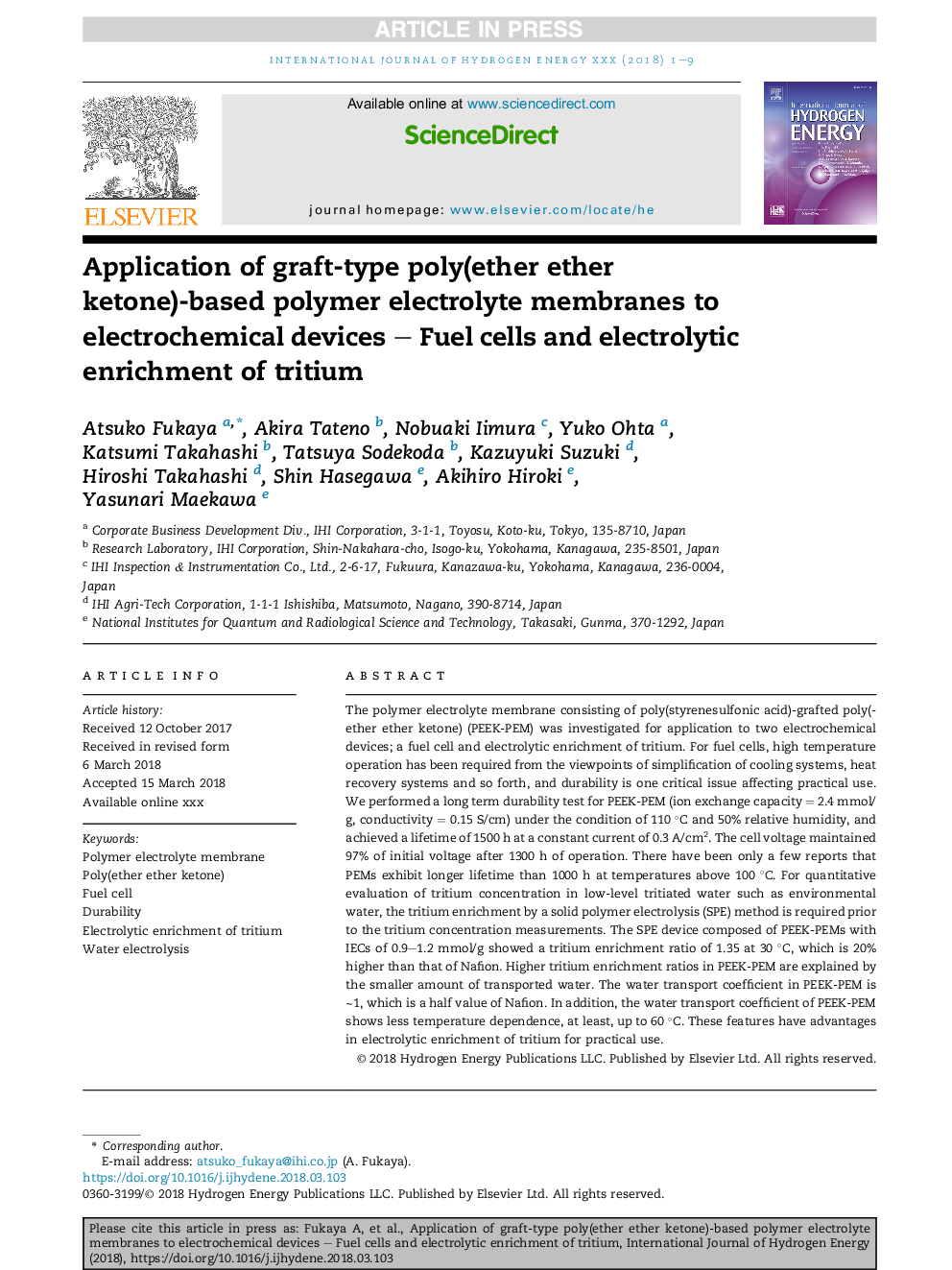| Article ID | Journal | Published Year | Pages | File Type |
|---|---|---|---|---|
| 7706258 | International Journal of Hydrogen Energy | 2018 | 9 Pages |
Abstract
The polymer electrolyte membrane consisting of poly(styrenesulfonic acid)-grafted poly(ether ether ketone) (PEEK-PEM) was investigated for application to two electrochemical devices; a fuel cell and electrolytic enrichment of tritium. For fuel cells, high temperature operation has been required from the viewpoints of simplification of cooling systems, heat recovery systems and so forth, and durability is one critical issue affecting practical use. We performed a long term durability test for PEEK-PEM (ion exchange capacity = 2.4 mmol/g, conductivity = 0.15 S/cm) under the condition of 110 °C and 50% relative humidity, and achieved a lifetime of 1500 h at a constant current of 0.3 A/cm2. The cell voltage maintained 97% of initial voltage after 1300 h of operation. There have been only a few reports that PEMs exhibit longer lifetime than 1000 h at temperatures above 100 °C. For quantitative evaluation of tritium concentration in low-level tritiated water such as environmental water, the tritium enrichment by a solid polymer electrolysis (SPE) method is required prior to the tritium concentration measurements. The SPE device composed of PEEK-PEMs with IECs of 0.9-1.2 mmol/g showed a tritium enrichment ratio of 1.35 at 30 °C, which is 20% higher than that of Nafion. Higher tritium enrichment ratios in PEEK-PEM are explained by the smaller amount of transported water. The water transport coefficient in PEEK-PEM is â¼1, which is a half value of Nafion. In addition, the water transport coefficient of PEEK-PEM shows less temperature dependence, at least, up to 60 °C. These features have advantages in electrolytic enrichment of tritium for practical use.
Related Topics
Physical Sciences and Engineering
Chemistry
Electrochemistry
Authors
Atsuko Fukaya, Akira Tateno, Nobuaki Iimura, Yuko Ohta, Katsumi Takahashi, Tatsuya Sodekoda, Kazuyuki Suzuki, Hiroshi Takahashi, Shin Hasegawa, Akihiro Hiroki, Yasunari Maekawa,
